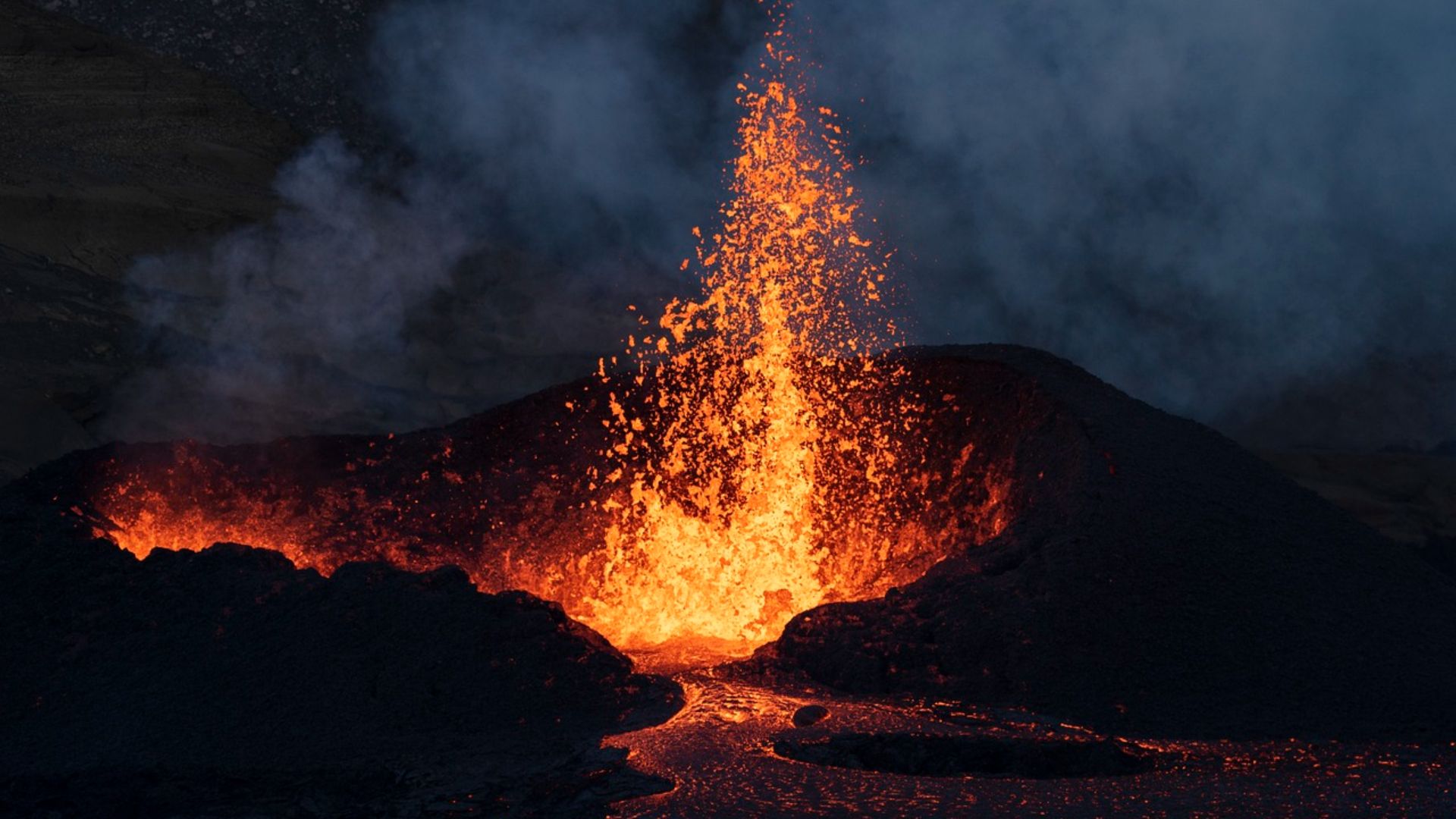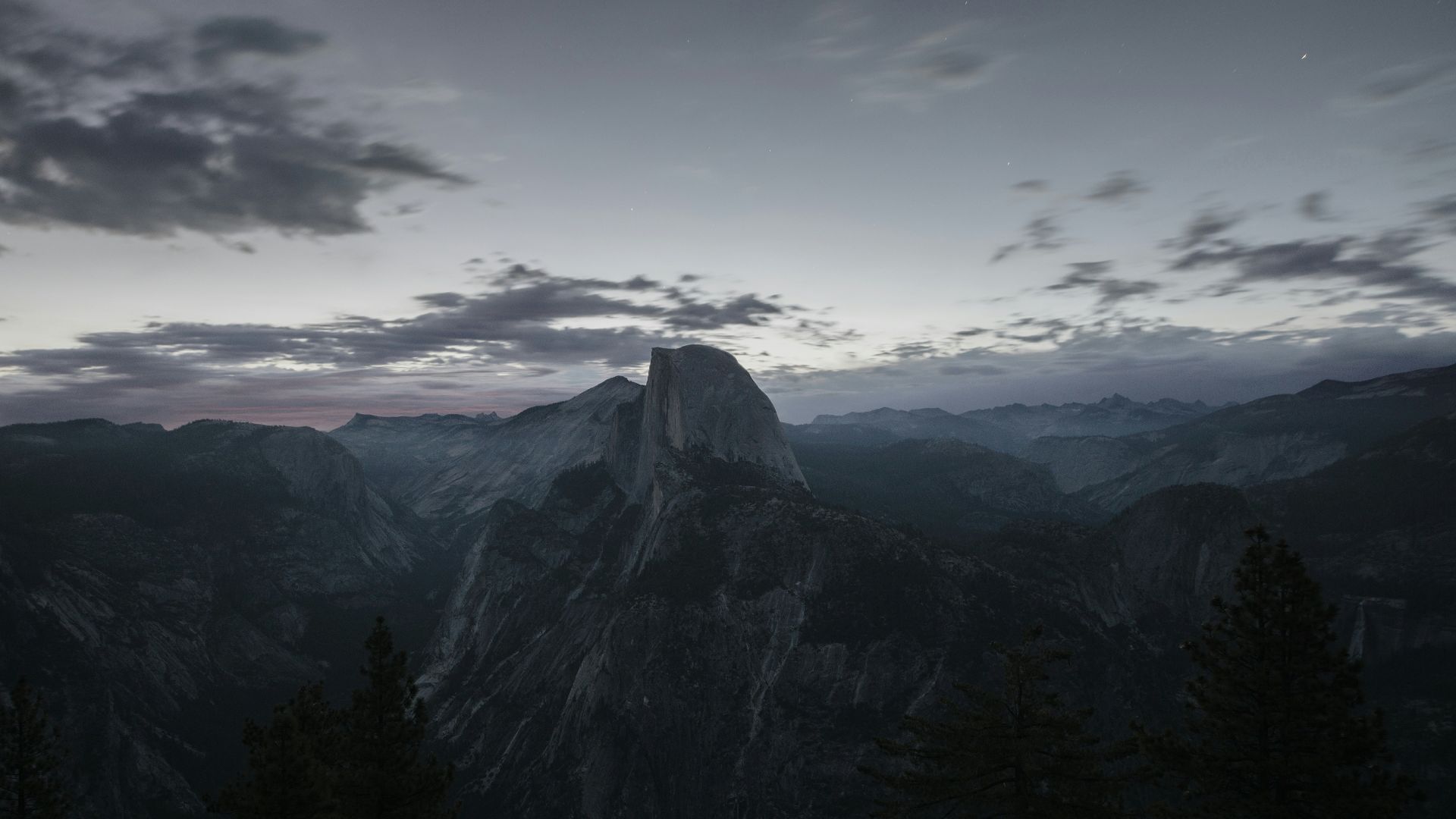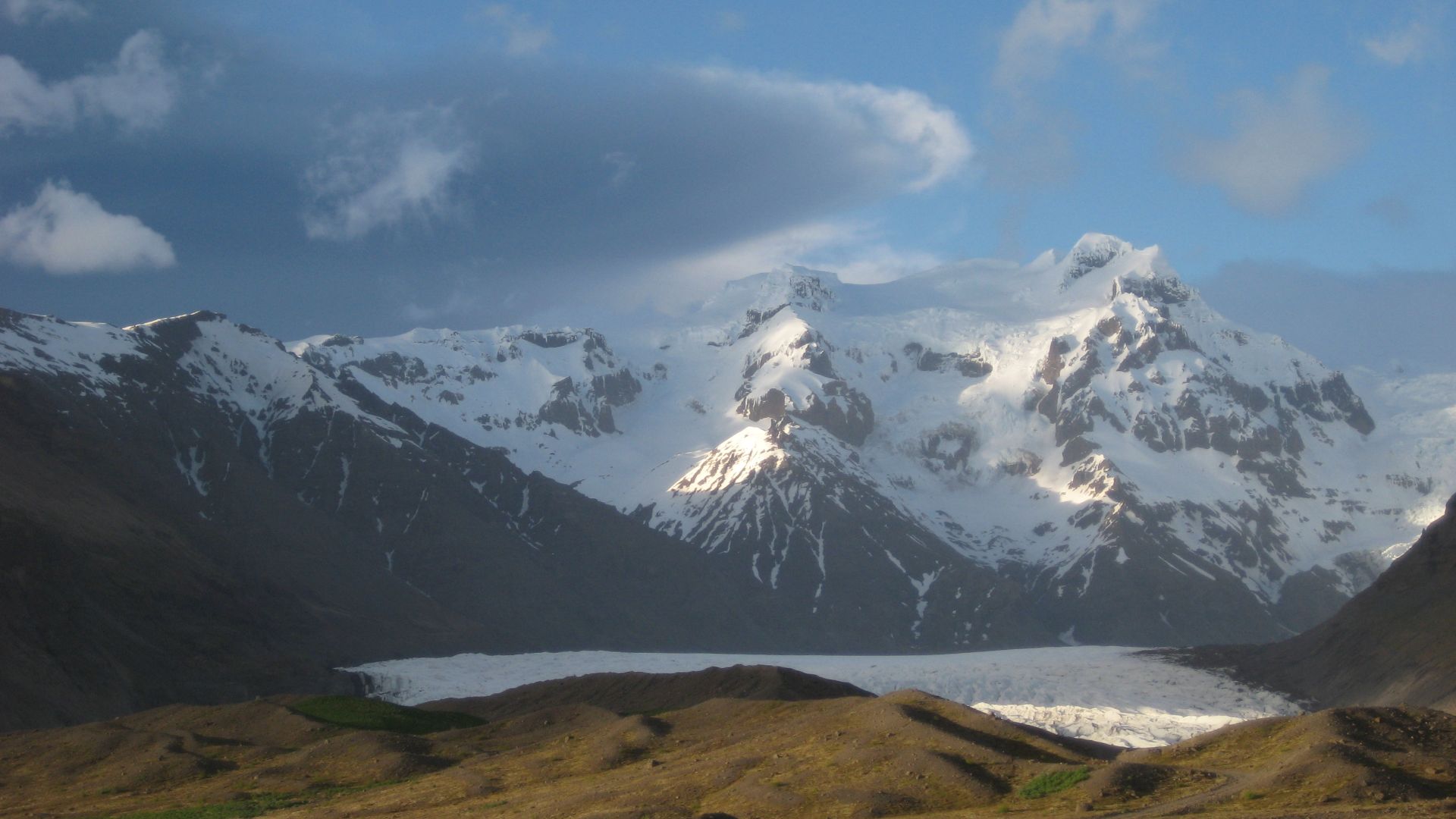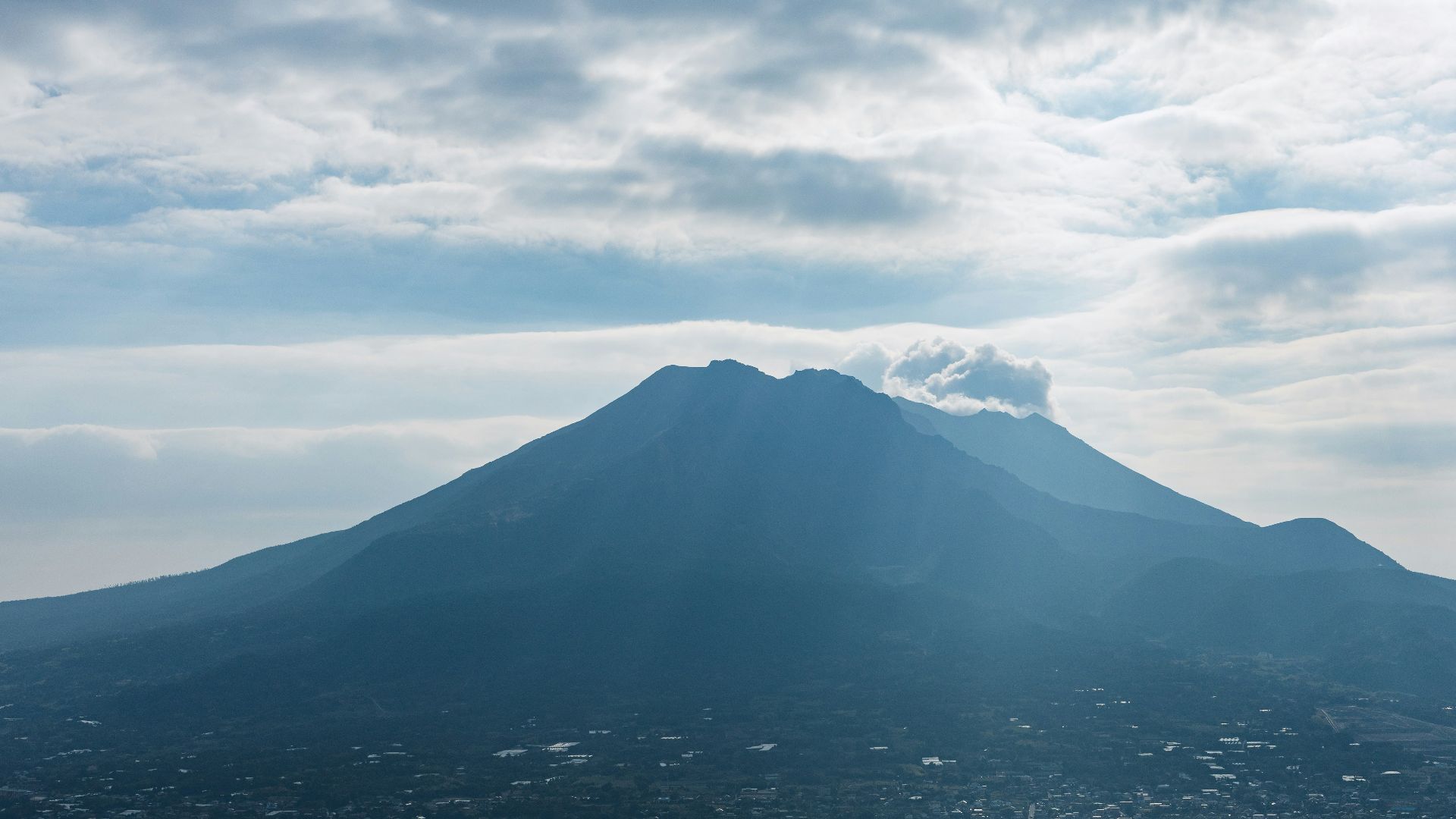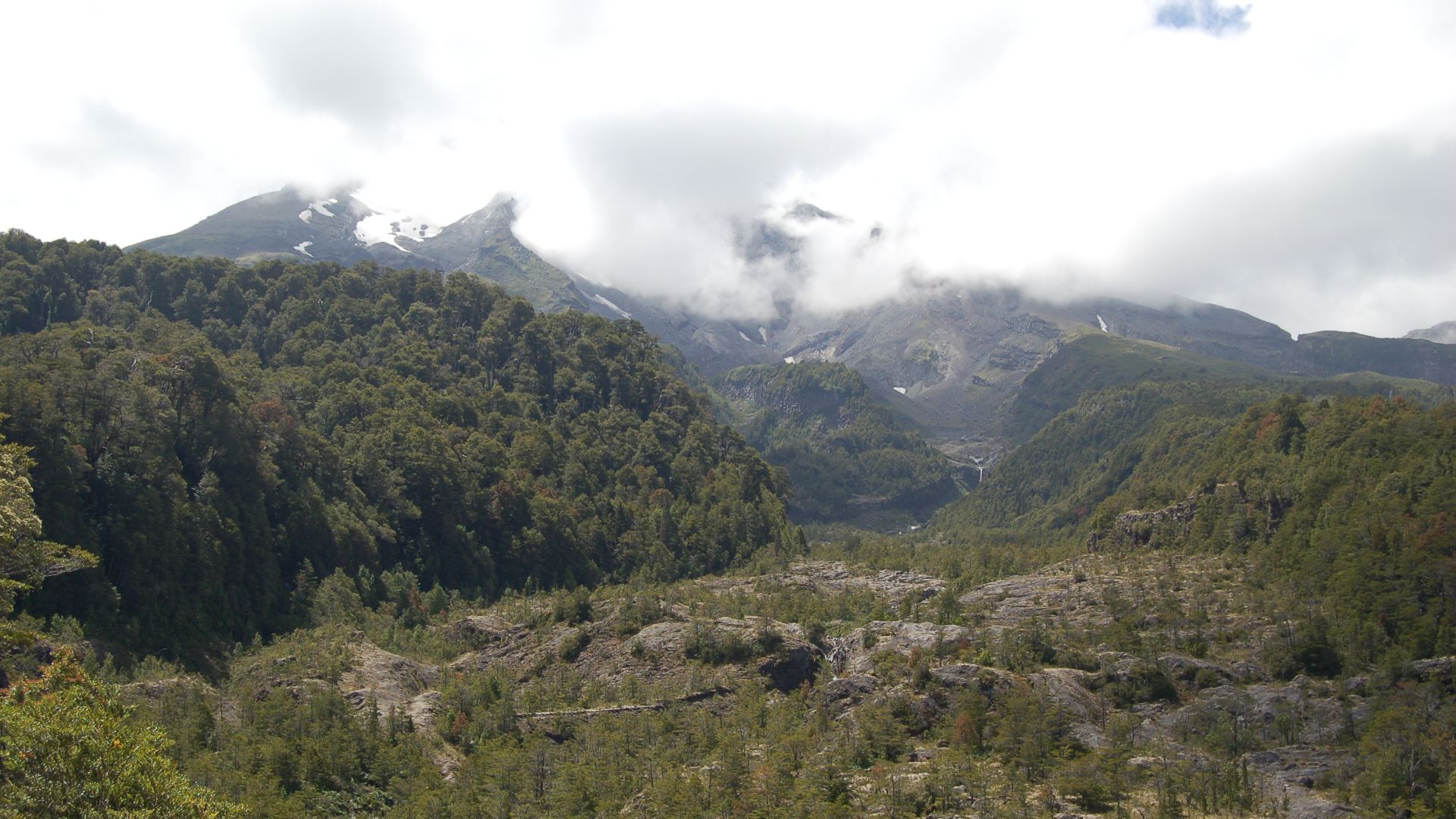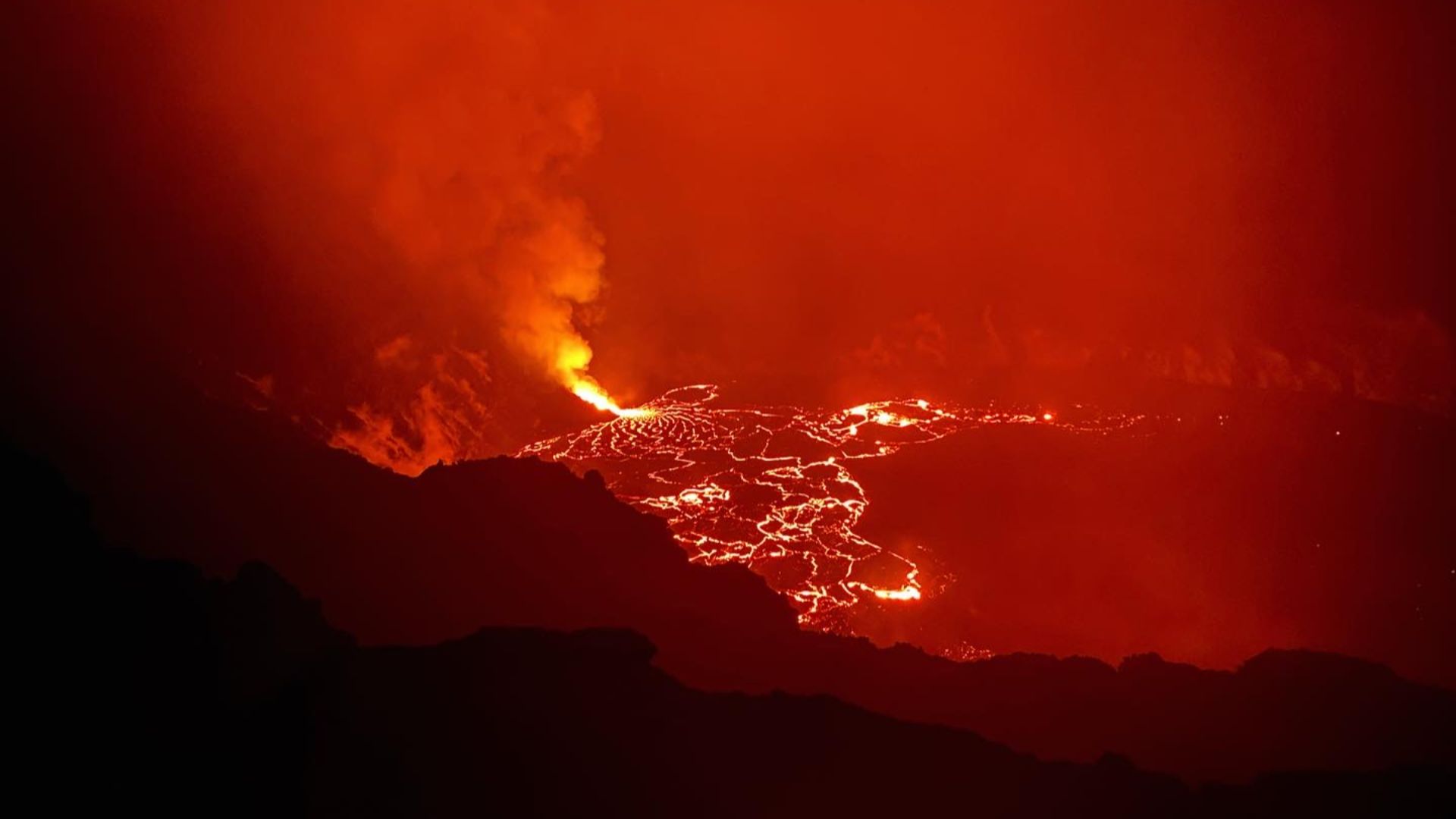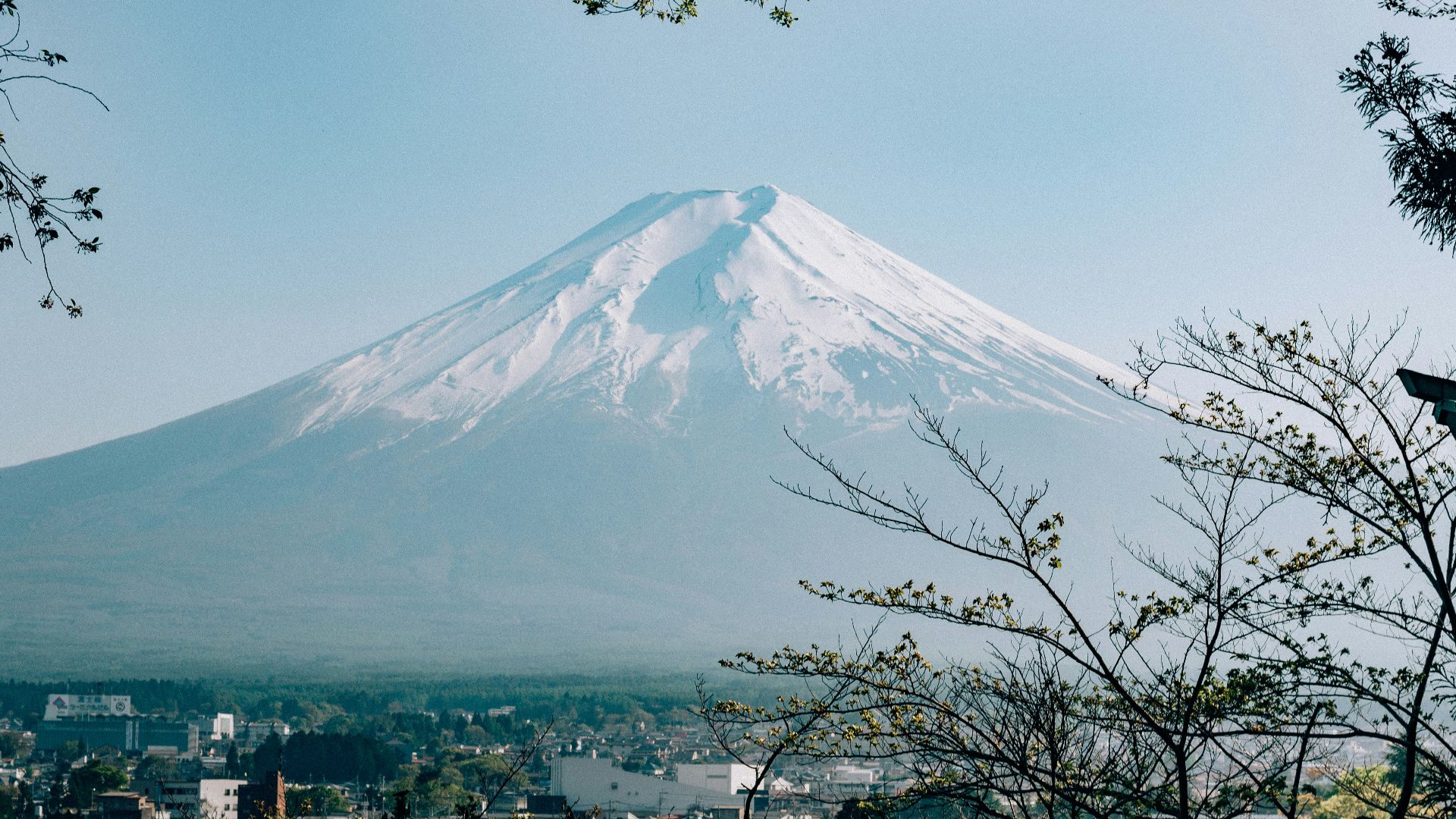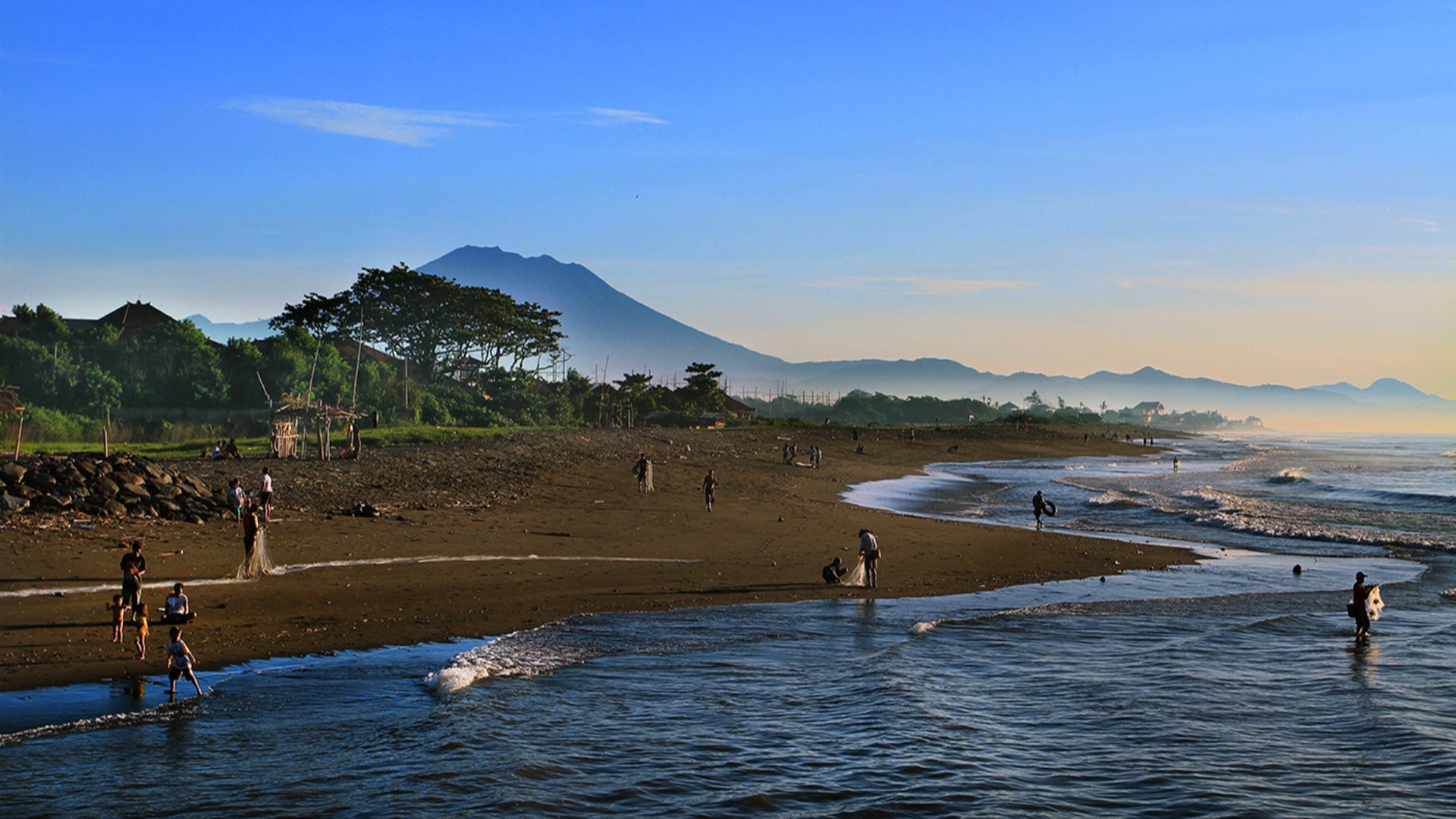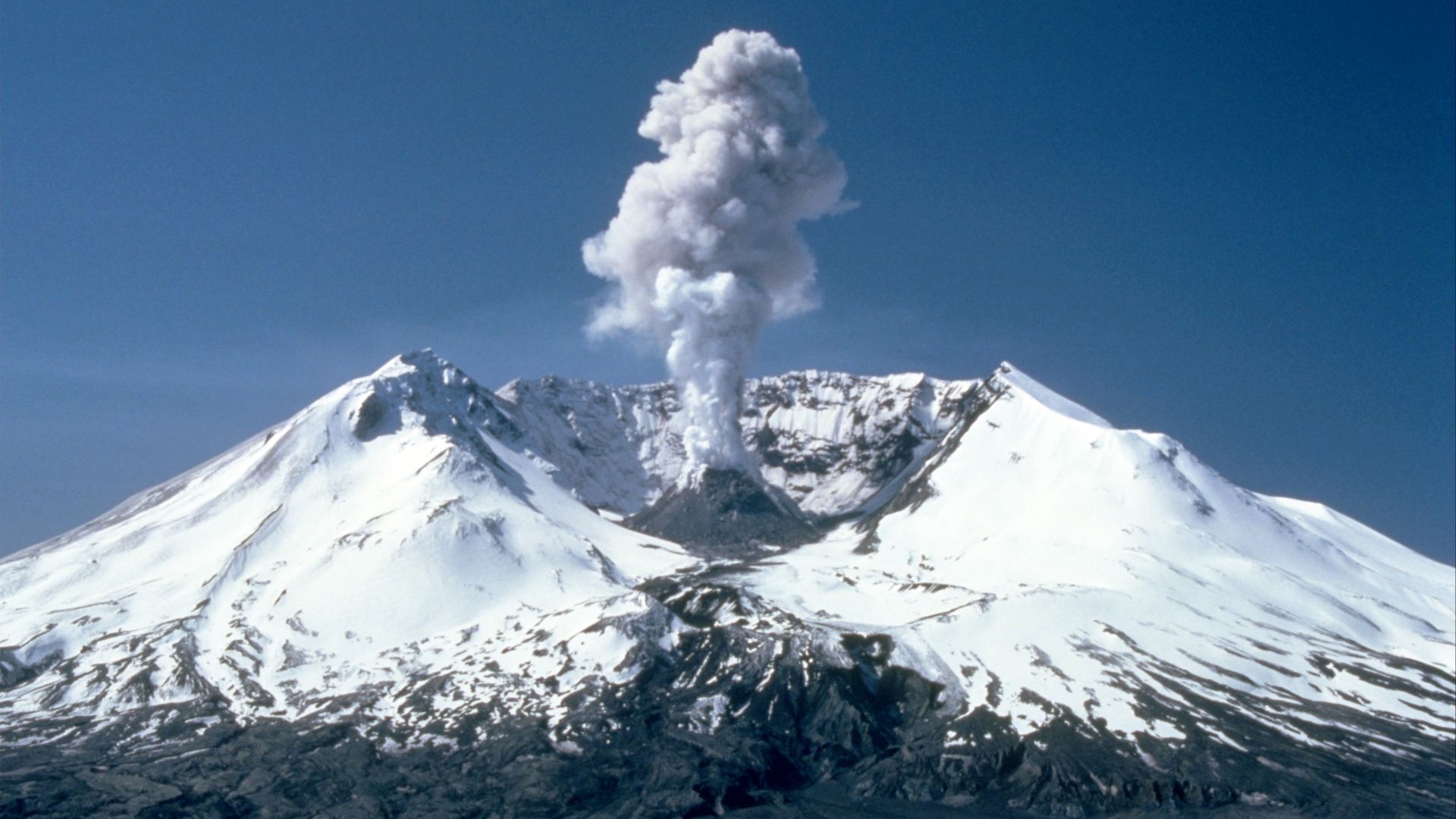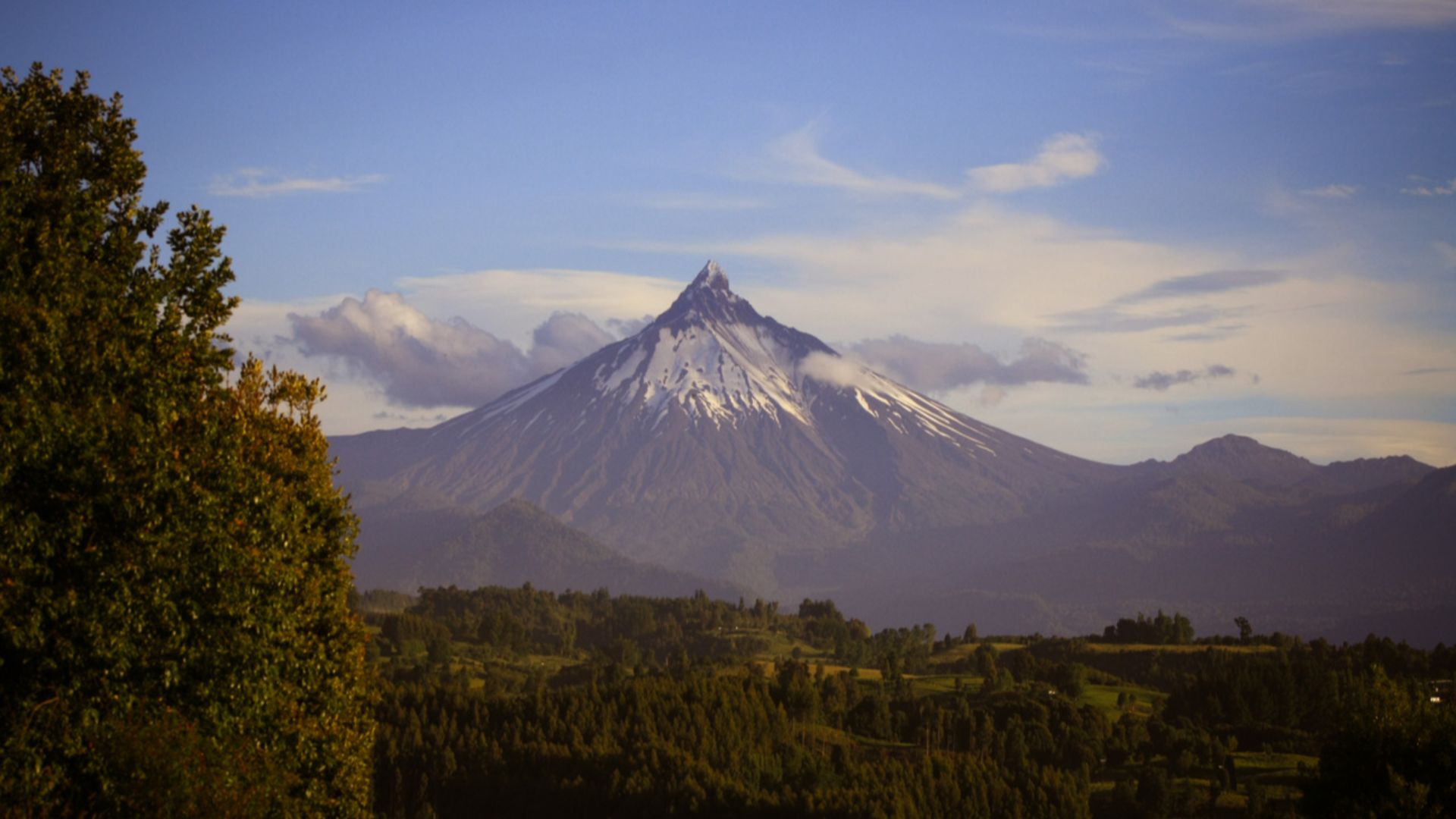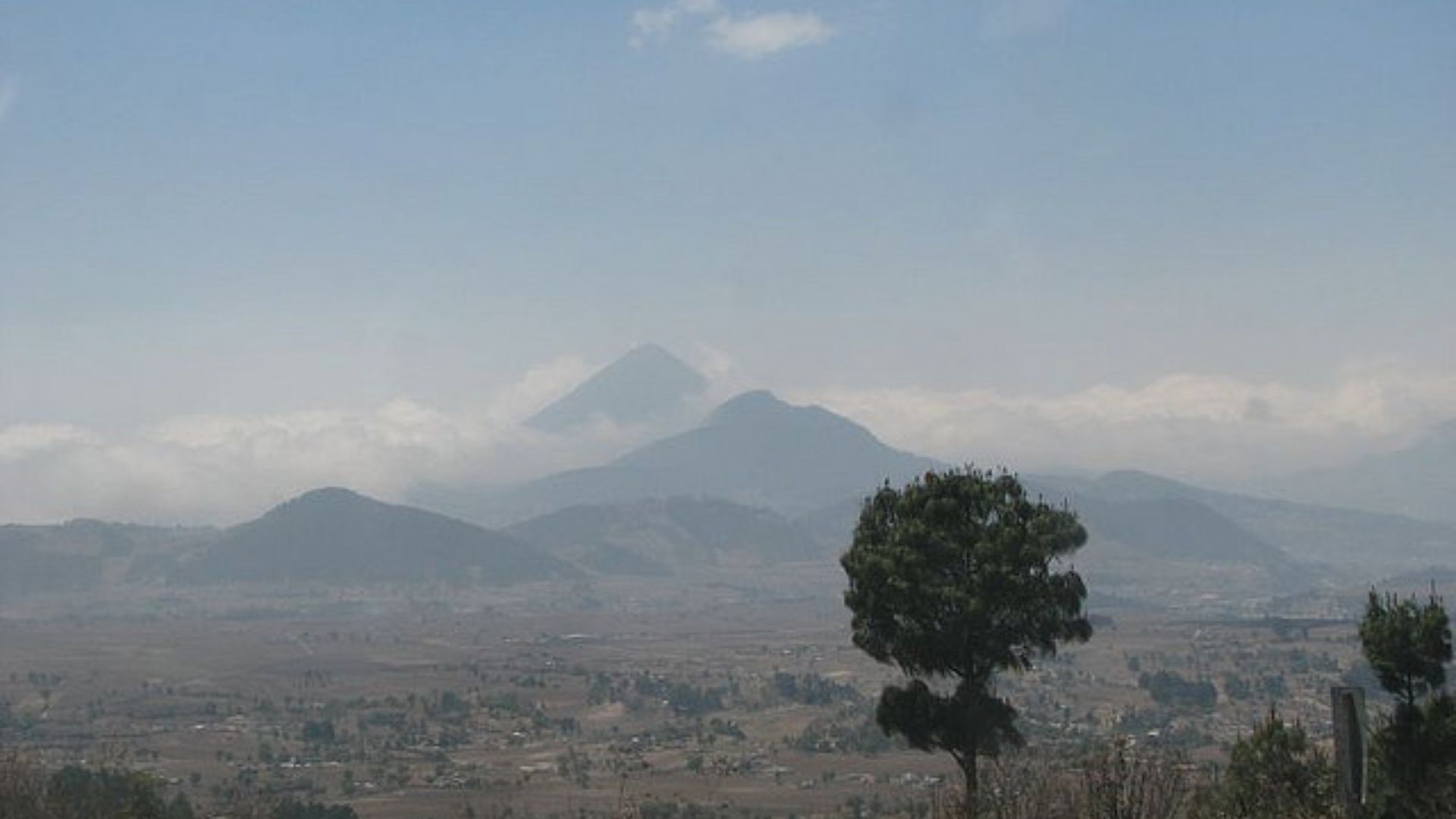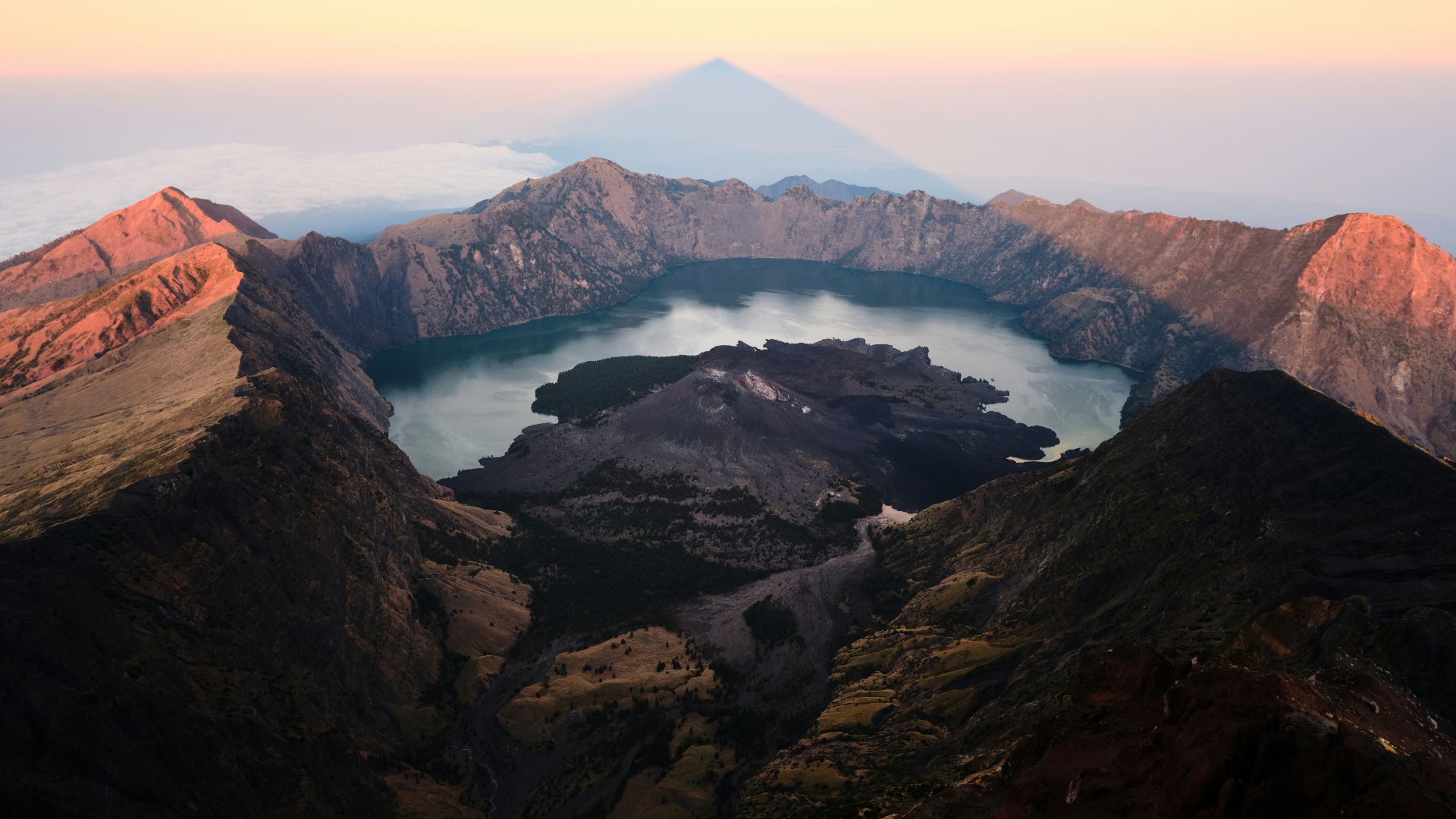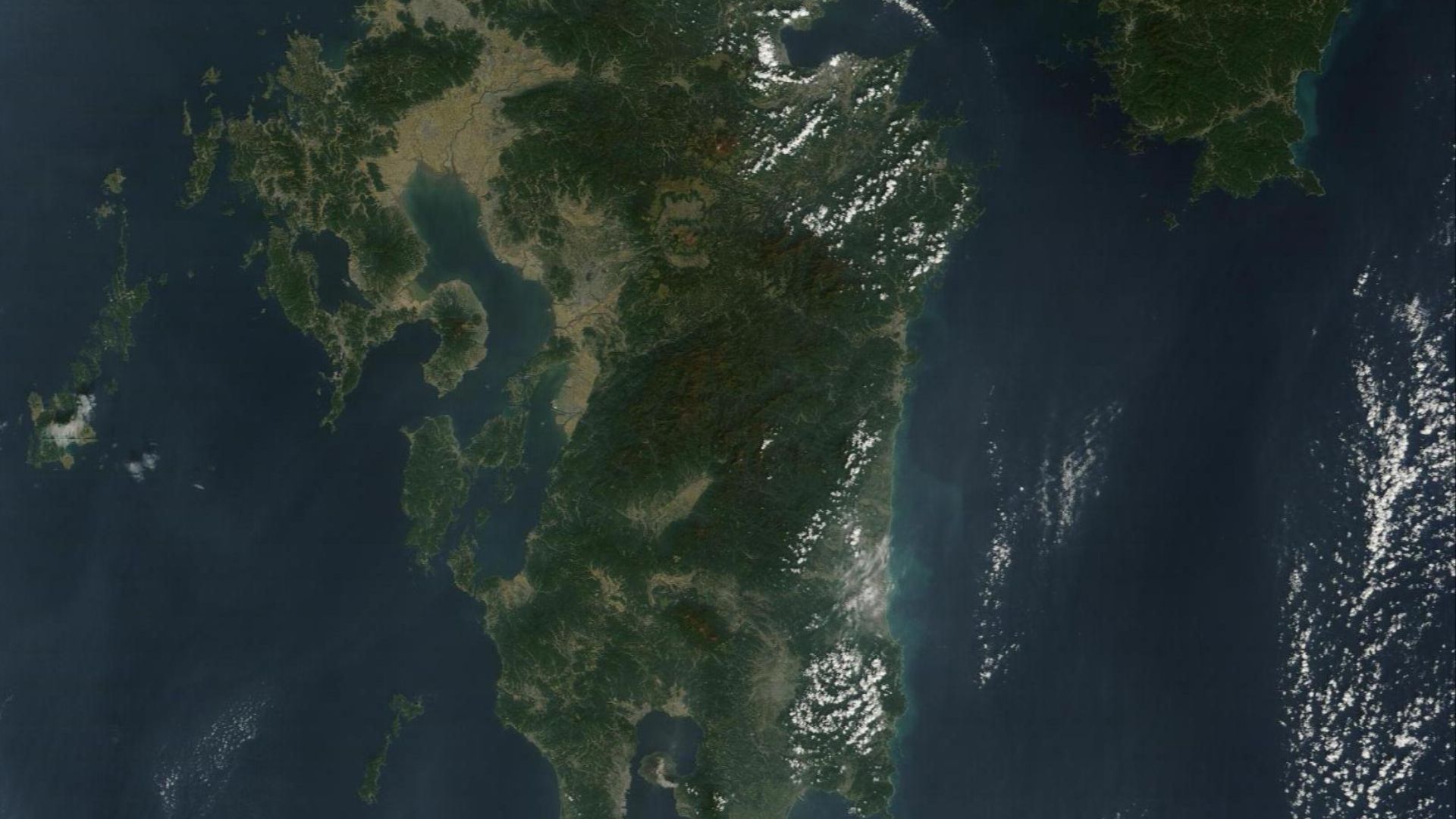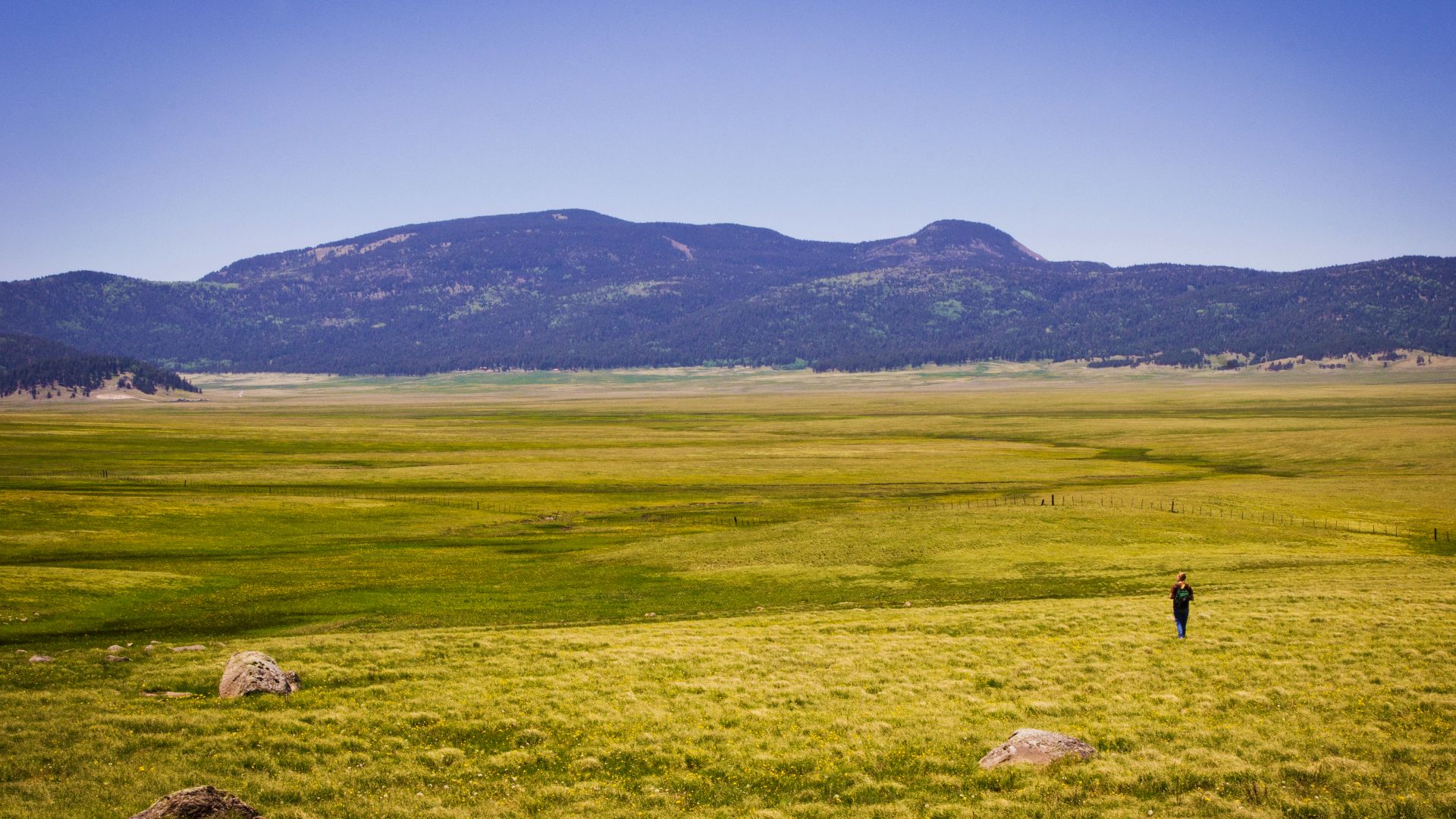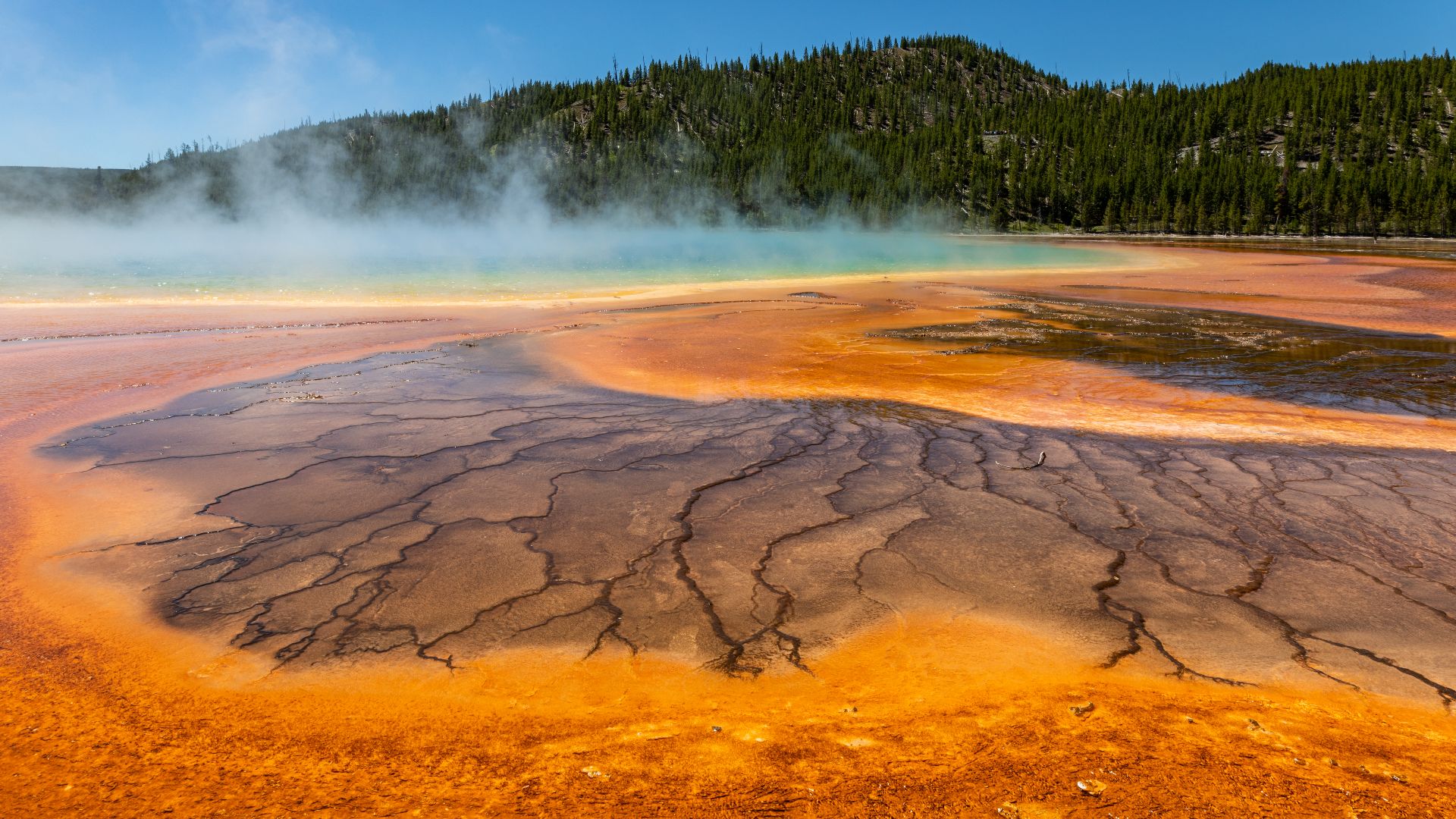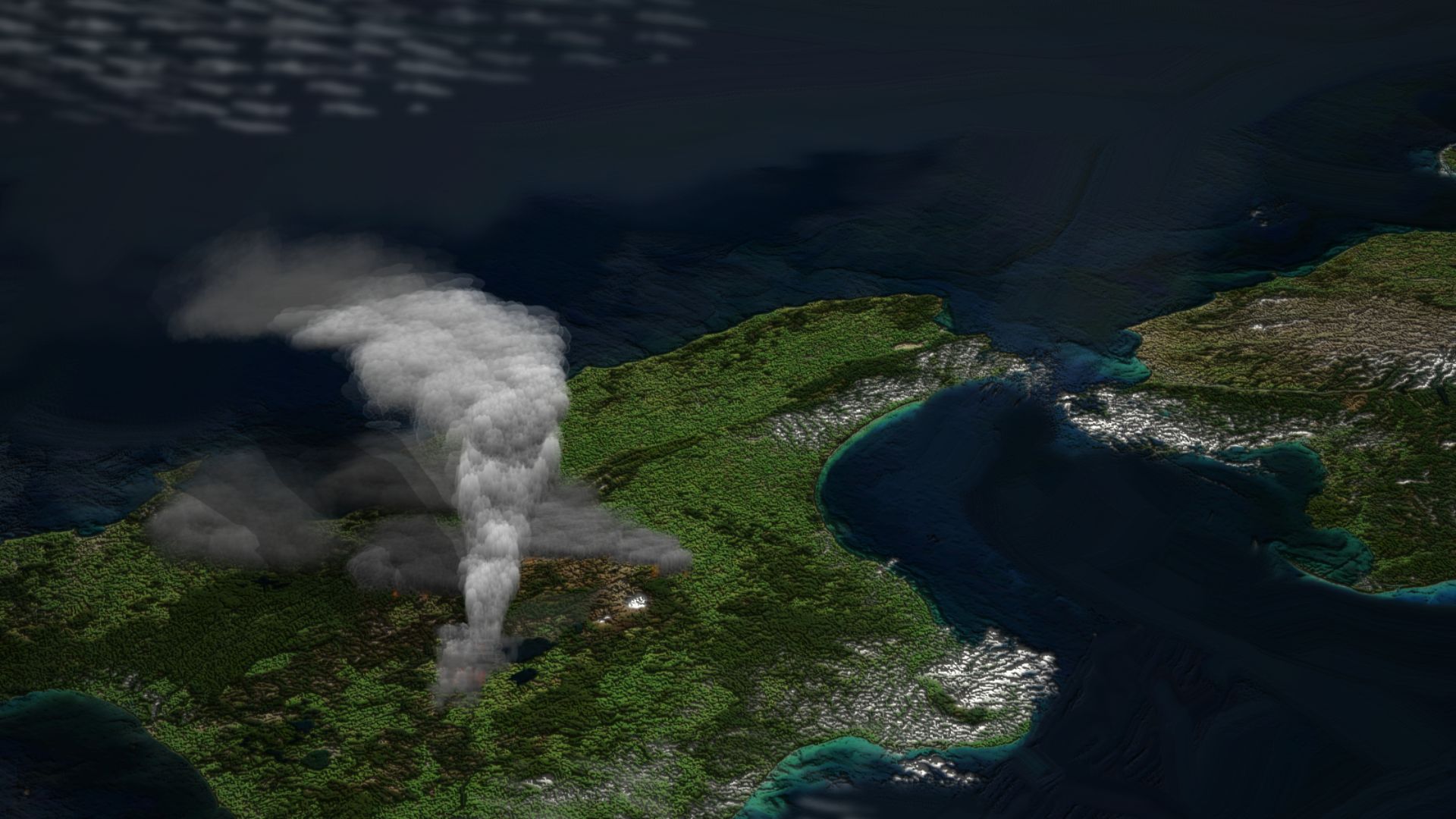Largest Volcano Eruptions
The biggest volcanic eruptions change history. They destroy cities. Or civilizations. One of them may have nearly wiped out humanity. Do we have your attention? Good! To measure these eruptions, we're going by the Volcanic Explosivity Index. It factors in how much stuff is ejected. Also, how big the plume is, and how much ash gets into the upper atmosphere. It's important to understand the orders of magnitude here. Each level of VEI is roughly ten times larger than the one below it. That means the biggest volcanic eruptions on this list are thousands of times bigger than the smallest. But then... big is a relative term where eruptions are concerned!
50. Mount Pelée
Year: 1913
VEI: 4
We're starting out with VEI 4 eruptions -- middle of the pack. But the 1902 eruption of Mount Pelée proves a volcano doesn't have to set records to do unspeakable damage. More than 29,000 people died when this volcano blanketed the island of Martinique in pyroclastic flows.
49. Mount Bandai
Year: 1888
VEI: 4
In order to have global impact, a volcano needs to eject huge amounts of ash into the atmosphere. This can block out the sun, leading to crop failures and mass famines. But the most dangerous local phenomena are pyroclastic flows. These roiling, incendiary clouds of hot gas and dust can leave the volcano at hurricane speeds. They flatten and kill all in their path. That's what happened when Japan's Mount Bandai erupted in 1888. It devastated hundreds of square kilometers, killing more than 470 people.
48. Laki
Year: 1783
VEI: 4
When Iceland's Laki volcano erupted in 1783, it released 8 million tons of hydrogen fluoride into the environment. The result was catastrophic. At least 9,000 Icelanders died, along with 80% of sheep, and 50% of cows and horses. There is some evidence that this eruption also affected rain patterns in North Africa. It may have contributed to a famine that killed one sixth of the population of Egypt.
47. Grímsvötn
Year: 2011
VEI: 4
In 2011, Iceland's most active volcano gave the country its biggest eruption for 50 years. Grímsvötn shot plumes high into the atmosphere, and blanketed ash on it's surroundings for 5 km in every direction. Although this eruption was relatively small, it still resulted in 900 canceled flights in Europe.
46. Nabro
Year: 2011
VEI: 4
Another volcano did some serious damage in 2011. Nabro erupted in Eritrea, Africa, killing as many as 38 and launching huge amounts of sulfur dioxide high into the sky. Like Grímsvötn, Nabro also downed flights.
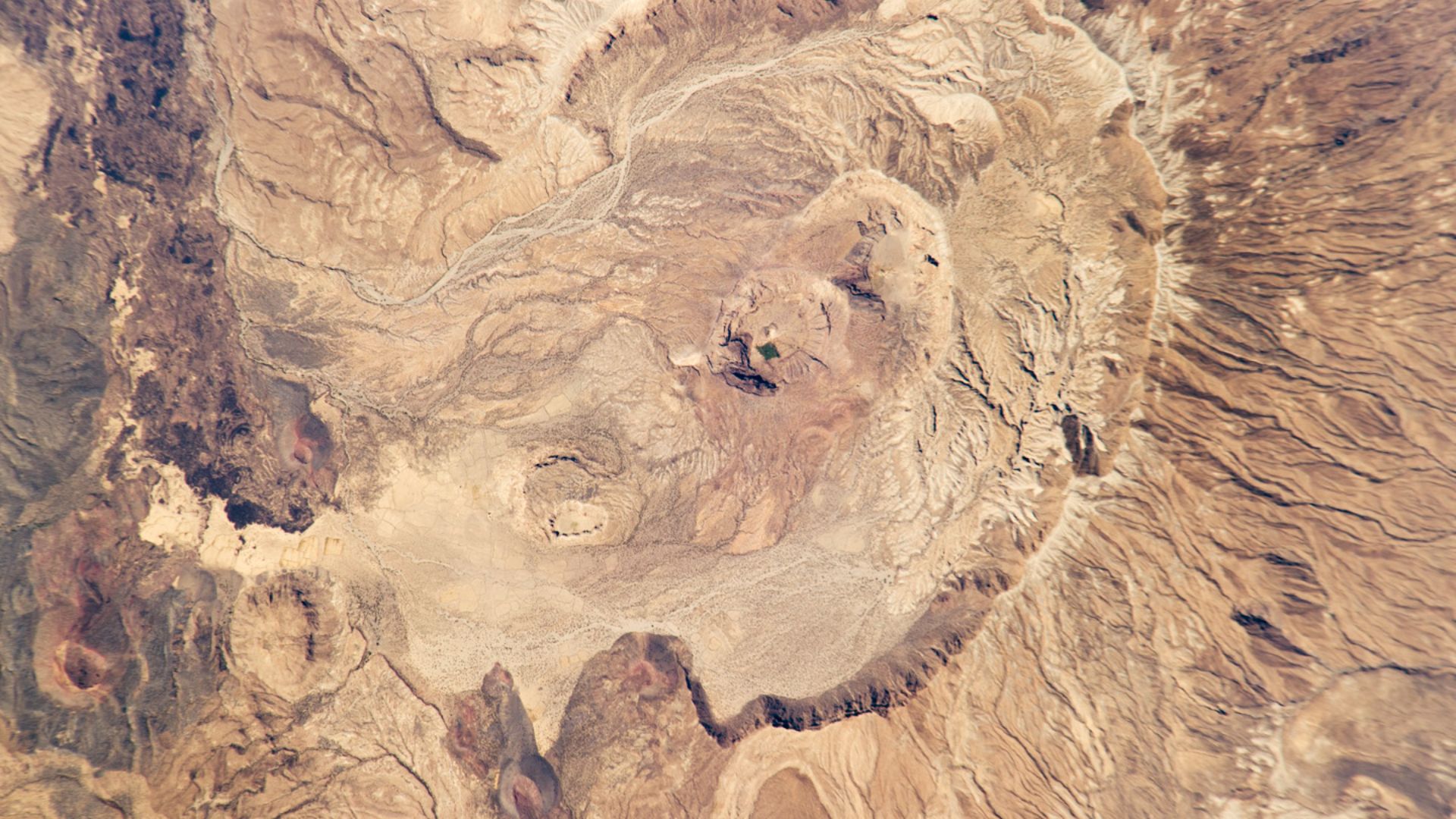 Nasa. Satellite: Aqua. on Wikimedia
Nasa. Satellite: Aqua. on Wikimedia
45. Sakurajima
Year: 1914
VEI: 4
Sakurajima had been quiet for more than a century until 1914. Then the rumbling began. Thirty-five locals died in the earthquakes that presaged the eruption. But fortunately most other people on the island took the hint and evacuated before Sakurajima blew. It released so much lava that it turned what was once an island into a peninsula, killing 23 more people in the process.
44. Kelud
Year: 2014
VEI: 4
The Indonesian volcano Kelud erupted in 2014, raining ash on an area 300 miles in diameter. Three people died from collapsing buildings and inhaling ash. A further 76,000 were evacuated. Air travel ground to a halt on the island of Java, stranding plenty of travelers.
43. Galunggung
Year: 1982
VEI: 4
Another Javanese Indonesian volcano, Galunggung showed her fury in 1982. Apart from a monstrous plume of ash, the eruption sparked volcanic mudslides known as lahars. Eighteen people died as a result of traffic accidents and starvation.
42. Katla
Year: 1918
VEI: 4
Katla is a major polluter, emitting 4% of all volcanic carbon monoxide. So much for going green, Iceland! Its 1918 eruption was the last major stir it made, however. That explosion deposited so much silt along the coast that it extended the coastling by 5 kilometers.
41. Mayon
Year: 1814
VEI: 4
Mayon is one of the prettiest volcanoes out there, and it's considered sacred in the Philippines. But in 1814 its behavior was anything but religious. It rained ash and rock on the town of Cagsawa, killing 1,200 people.
 Erickson Banzuela Balderama on Wikimedia
Erickson Banzuela Balderama on Wikimedia
40. Colima
Year: 1913
VEI: 4
Colima is a volcano on the central west coast of Mexico. It is one of the most active volcanoes in North America, having erupted at least 40 times since 1570. The largest recorded explosion from Colima was in 1913, after which it was quiet for more than 40 years.
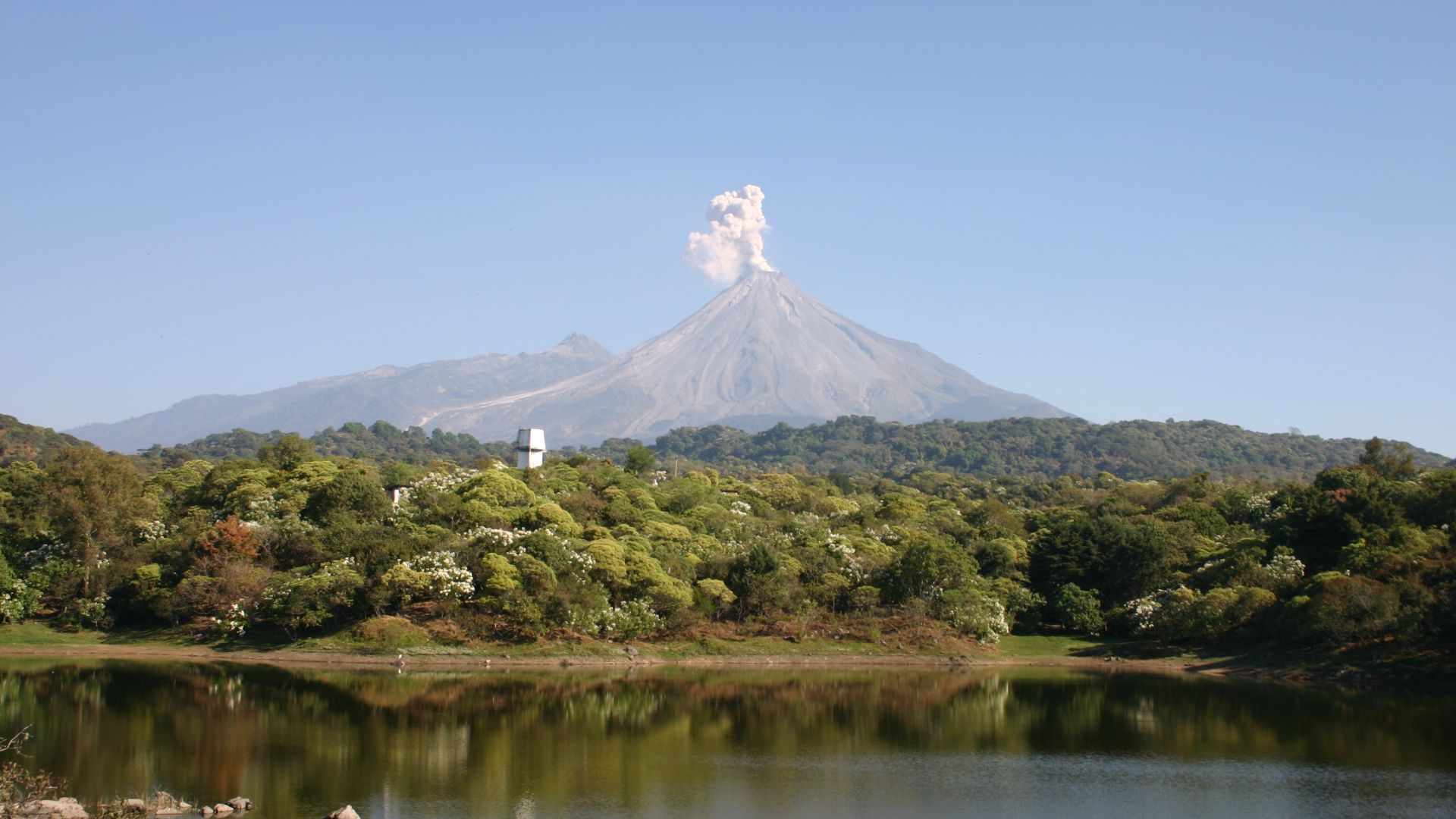 Comisión Mexicana de Filmaciones from México D. F., México on Wikimedia
Comisión Mexicana de Filmaciones from México D. F., México on Wikimedia
39. Calbuco
Year: 2015
VEI: 4
Calbuco is a stratovolcano in south Chile. (As you'll see, Chile plays host to a very large number of volcanoes.) In 2015, Calbuco made headlines by exploding with absolutely no warning at all. Beforehand, it had been dormant since 1972.
38. Kīlauea
Year: 1790
VEI: 4
Hawaii's Kīlauea is famously one of the most active volcanoes on earth. It constantly bleeds a sticky stream of lava into the Pacific Ocean. After dark, the result is a spectacular display that attracts many tourists.However, in 1790, Kīlauea had a rare outburst. It exploded in dramatic fashion, killing a number of warriors who were in the area at the time. Their last footprints can still be seen today.
37. Eyjafjallajökull
Year: 2010
VEI: 4
You may not be able to pronounce Eyjafjallajökull. However, you'll likely remember it as the Icelandic volcano that downed thousands of flights way back in 2010. If that's the chaos a VEI 4 explosion can unleash, imagine how deadly the biggest volcanic eruptions must be! Next we'll take a look at VEI 5 eruptions, an order of magnitude larger.
 Bjarki Sigursveinsson on Wikimedia
Bjarki Sigursveinsson on Wikimedia
36. Vesuvius
Year: 79 AD
VEI: 5
Vesuvius is one of the world's most famous volcanoes. It erupted in 79 AD, burying the Roman cities of Pompeii and Herculaneum. Both towns were petrified and preserved beneath a blizzard of ash. However morbid, they make fascinating tourist attractions.
35. Mount Fuji
Year: 1707
VEI: 5
Mount Fuji is one of the world's prettiest volcanoes. Snow-capped and close-but-not-too-close to Tokyo, hikers flock here. But in 1707, it unleashed 800 cubic meters of rock into the atmosphere. The explosion was so powerful that it rained ash up to 60 miles away. Subsequent deposits blocked rivers, leading to flooding throughout the area.
34. Tarawera
Year: 1886
VEI: 5
Mount Tarawera rests on New Zealand's North Island. Just after midnight on June 10, 1886, it began belching fire into the sky. The result was the deadliest eruption in New Zealand's modern history. At least 120 people were killed, and several communities wiped off the face of the earth.
33. Agung
Year: 1963
VEI: 5
Indonesia is another country famous for seeing some of the biggest volcanic eruptions ever. One of these came in 1963, when Mount Agung unleashed her fury. The enormous explosion sent ash and dust 8 km into the atmosphere. Down below, pyroclastic flows incinerated more than 1,100 people. Subsequent mudslides killed hundreds more. The result was one of the worst disasters in the history of Indonesia.
32. Mount St. Helens
Year: 1980
VEI: 5
The 1980 explosion of Mount St. Helens remains the worst volcanic disaster in American history. The plume rose 15 miles into the ski, raining ash on 11 states in the northwest. Meanwhile, melting glaciers unleashed mudslides that ran as far as 50 miles away from the summit. Fifty-seven people died in the calamity, and hundreds of square miles were leveled. As terrible as the 1980 explosion was, it's worth pointing out that the biggest volcanic eruptions on this list were thousands of times more powerful. It's hard to get a sense of the scale of devastation we're talking about here.
31. El Chichón
Year: 1982
VEI: 5
Everyone thought El Chichón was dormant. Until 1982. In that year, the volcano blew its stack, destroying 9 nearby villages, killing more than 4,000. El Chichón released 7 million tonnes of sulfur dioxide into the atmosphere, and 20 million tons of rock and dust. It was one of the biggest volcanic eruptions in modern times, significant enough to affect the climate of the planet.
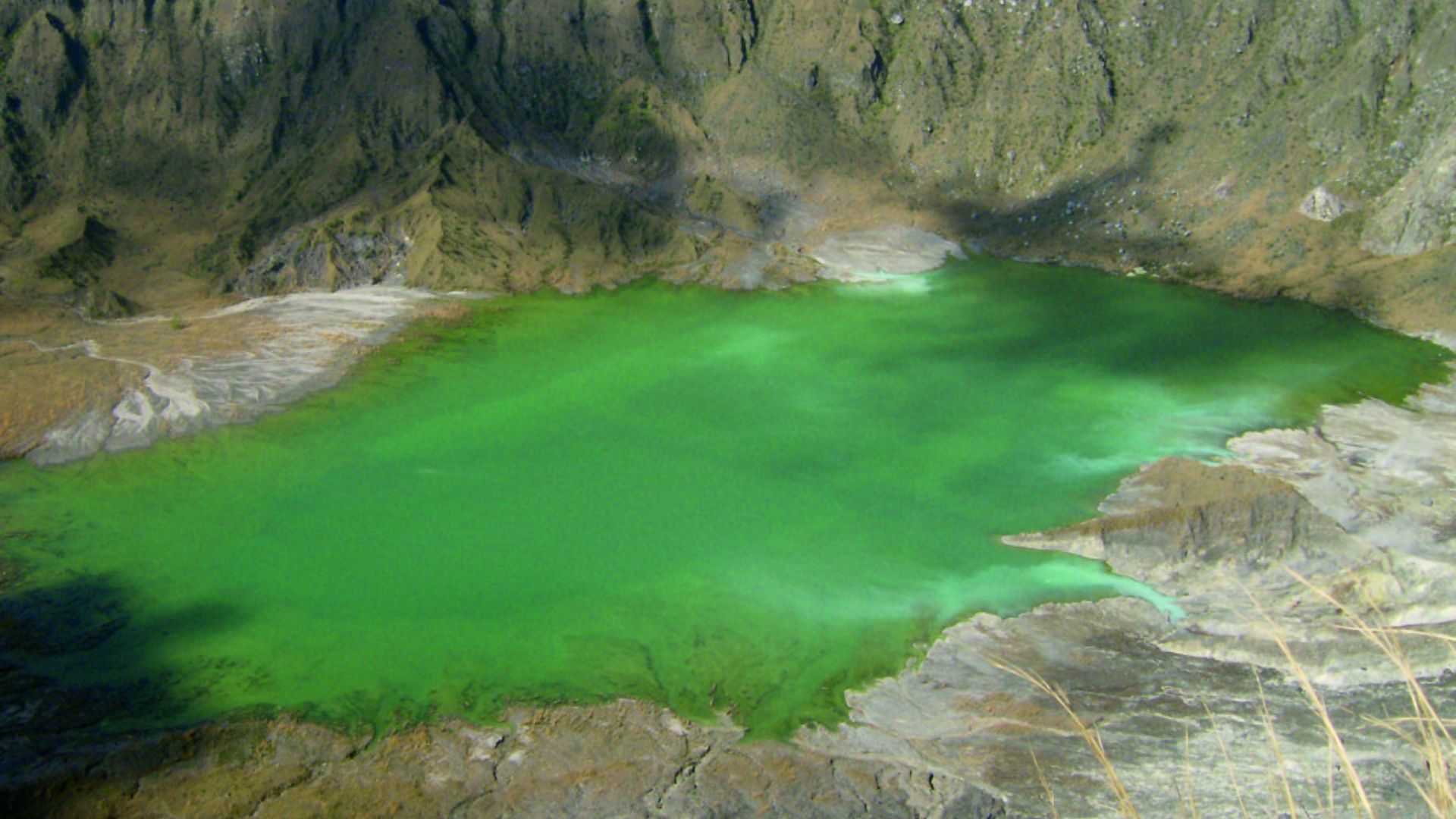 Dmitri Rouwet, Marta Iorio and Demetrio Polgovsky on Wikimedia
Dmitri Rouwet, Marta Iorio and Demetrio Polgovsky on Wikimedia
30. Mount Hudson
Year: 1991
VEI: 5
Mount Hudson is another resident of southern Chile. It was also the site of one of the 20th century's biggest volcanic eruptions. In 1991, Hudson burped 4.3 cubic kilometers of dust and rock into the atmosphere. The ash rained down on Chile, Argentina, and as far afield as the Falkland Islands. Fortunately, Mount Hudson is remote enough that no one was killed in the blast.
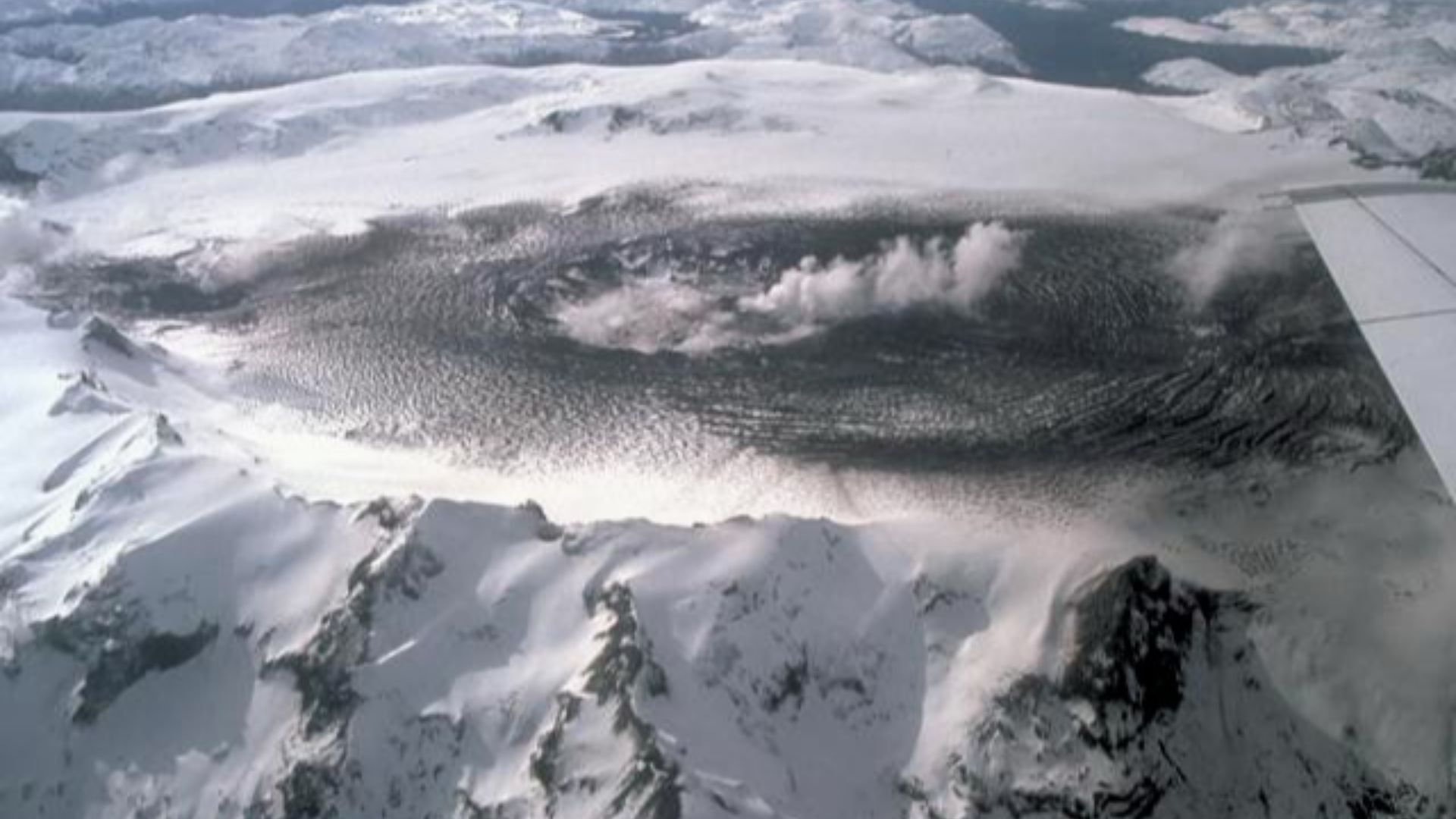 Chile1853~commonswiki on Wikimedia
Chile1853~commonswiki on Wikimedia
29. Puyehue
Year: 2011
VEI: 5
The biggest volcanic eruption of the 21st century so far also took place in Chile. Puyehue had been inactive for more than 50 years when it unloaded in 2011. It sent a plume 33,000 feet into the atmosphere. Scientists estimate it released enough material to fill 24 million trucks. The explosion unleashed the equivalent energy of about 70 atomic bombs. The dust and ash released caused hundreds of canceled flights in the Southern Hemisphere, as far away as Australia.
28. Lake Laach Volcano
Year: 12,970 years ago
VEI: 6
The further up the scale of eruptions we go, the further back in time we travel. That's a very good thing; otherwise, we might not be here. The ovular German Lake Laach is a visible reminder of the damage volcanoes are capable of inflicting. Nearlt 13,000 years ago, it was created by a gigantic explosion. It likely sent ash flying 35 kilometers into the sky, and would have immediately killed anything within a 60 km radius.
27. Nevado de Toluca
Year: 8550 BC
VEI: 6
Nevado de Toluca is a stratovolcano in the heart of Mexico. In prehistoric times, it had a long history of massive eruptions. The most recent major event came 10,500 years ago. It's estimated that this eruption sent 14 cubic km of dust and ash into the atmosphere. That was enough to deposit 2 feet of sand in the area of Mexico City.
 Juan Carlos Fonseca Mata on Wikimedia
Juan Carlos Fonseca Mata on Wikimedia
26. Veniaminof
Year: 1750 BC
VEI: 6
Mount Veniaminof is located in the vast expanse of Alaska. It is, therefore, far away from population centers. However, about 3,700 years ago, it had a mammoth explosion. The only remaining evidence is a large caldera, and fortunately its recent explosions have all been small. However, there have been eruption alerts issued in recent years...
 M.E. Yount, U.S. Geological Survey on Wikimedia
M.E. Yount, U.S. Geological Survey on Wikimedia
25. Lake Ilopango
Year: 450
VEI: 6
Lake Ilopango is a 28 square mile lake in El Salvador. However, it's not what it seems. The lake is in fact a caldera, a remnant of one of the biggest volcanic eruptions in the last 7,000 years. It released the equivalent of 10 cubic miles of dense rock. The immediate death toll is unknown, however this eruption had worldwide implications. Not long after the explosion, the Northern Atmosphere cooled significantly. The result was crop failure and widespread famine. The Lake Ilopango eruption may well have been the culprit.
24. Ceboruco
Year: 930
VEI: 6
We're staying in Mexico to talk about Ceboruco. The eruption of this stratovolcano in 930 released 11 cubic km of volcanic rock, and no doubt devastated the people living in central Mexico at the time.
 Christian Frausto Bernal from Tepic, Nayarit, MEXICO on Wikimedia
Christian Frausto Bernal from Tepic, Nayarit, MEXICO on Wikimedia
23. Huaynaputina
Year: 1600
VEI: 6
The explosion of Huaynaputina in 1600 is one of the biggest volcanic eruptions in the history of South America. It buried the surrounding region in 6.6 feet of rock, destroying all vegetation. We're now starting to talk about eruptions big enough to affect the whole planet. Huaynaputina likely contributed to the Little Ice Age that began around this time, leading to floods, famines, and political upheavals all over the world.
 Earth Science and Remote Sensing Unit, Lyndon B. Johnson Space Center on Wikimedia
Earth Science and Remote Sensing Unit, Lyndon B. Johnson Space Center on Wikimedia
22. Krakatoa
Year: 1883
VEI: 6
Krakatoa was one of the biggest volcanic eruptions in recorded history, and among the most famous. It was so big it destroyed 70% of the Indonesian island of the same name. The explosion of Krakatoa was so loud that it was heard up to 3,000 miles away. The explosion and subsequent tsunamis killed more than 36,000 people.
21. Santa María
Year: 1902
VEI: 6
The Santa María Volcano was dormant for at least 500 years before it roared back to life in 1902. It rained pumice over 105,000 square miles. Ash from Santa María traveled as far as 4,000 miles -- from Guatemala to San Francisco. Tragically, about 6,000 people died as a result of the explosion.
20. Novarupta
Year: 1912
VEI: 6
'Novarupta' means 'newly erupted' in Latin. And so it is. The Novarupta only formed in 1912 -- though it did so in one of the biggest volcanic eruptions in modern times. It was about 30 times more powerful than Mount St. Helens -- belching about 3.6 cubic miles of ash into the atmosphere.
 Katmai National Park and Preserve on Wikimedia
Katmai National Park and Preserve on Wikimedia
19. Pinatubo
Year: 1991
VEI: 6
The explosion of Mount Pinatubo in 1991 shocked the world. The volcano sent ash 25 miles into the sky. It circled the earth several times. In the Philippines, 800 people were killed, and 10,000 left homeless. Pinatubo released so much sulfur dioxide into the atmosphere that average world temperatures dipped 0.9 °F from 1991-93. It was the definition of a global disaster.
18. Tambora
Year: 1815
VEI: 7
The Tambora eruption of 1815 was one of the biggest volcanic eruptions in recorded history. It's the most recent VEI 7 eruption, and it's impacts were alarming. Although Mount Tambora is located in Indonesia, this explosion changed the world. It released so much ash into the atmosphere that it literally canceled summer. For real: 1816 was called "the year without a summer." Closer at hand, subsequent tsunamis killed as many as 4,600 people in the surrounding seas.
 Jialiang Gao (peace-on-earth.org) on Wikimedia
Jialiang Gao (peace-on-earth.org) on Wikimedia
17. Samalas
Year: 1257
VEI: 7
Boy, Indonesia sure does have its share of the world's biggest volcanic eruptions. Samalas is located on the island of Lombok, which was then the seat of a great kingdom. Its capital of Sumbawa was buried in the blast and has never been rediscovered. It's a little bit of an Atlantis story. The global climactic effects of Samalas were about 8 times greater than Krakatoa.
16. Paektu Mountain
Year: 946
VEI: 7
Paektu is a mountain of special cultural significance in Korea -- specifically North Korea, where it's located. However, it's also a mighty volcano. The eruption of 946 was truly enormous. The ash fallout covered 580,000 square miles and caused serious climate change in neighboring China. As much as 24–29 cubic miles of tephra was released during the explosion.
15. Thera
Year: 1620 BC
VEI: 7
Also known as the Minoan eruption, this cataclysmic event devastated that civilization. It occurred on the island now known as Santorini. It wracked the Mediterranean world with earthquakes and tsunamis, and ejected as much as 24 cubic miles of material. The Thera eruption and the subsequent decline of the Minoan civilization may be the basis for the myth of Atlantis.
 Steve Jurvetson from Menlo Park, USA on Wikimedia
Steve Jurvetson from Menlo Park, USA on Wikimedia
14. Cerro Blanco
Year: 2300 BC
VEI: 7
Argentina's Cerro Blanco volcano exploded in 2300 BC, ejecting 41 cubic miles worth of dust and ash into the atmosphere. Ever since, it has remained dormant. Which is a good thing. Any future eruption would put thousands of lives at risk.
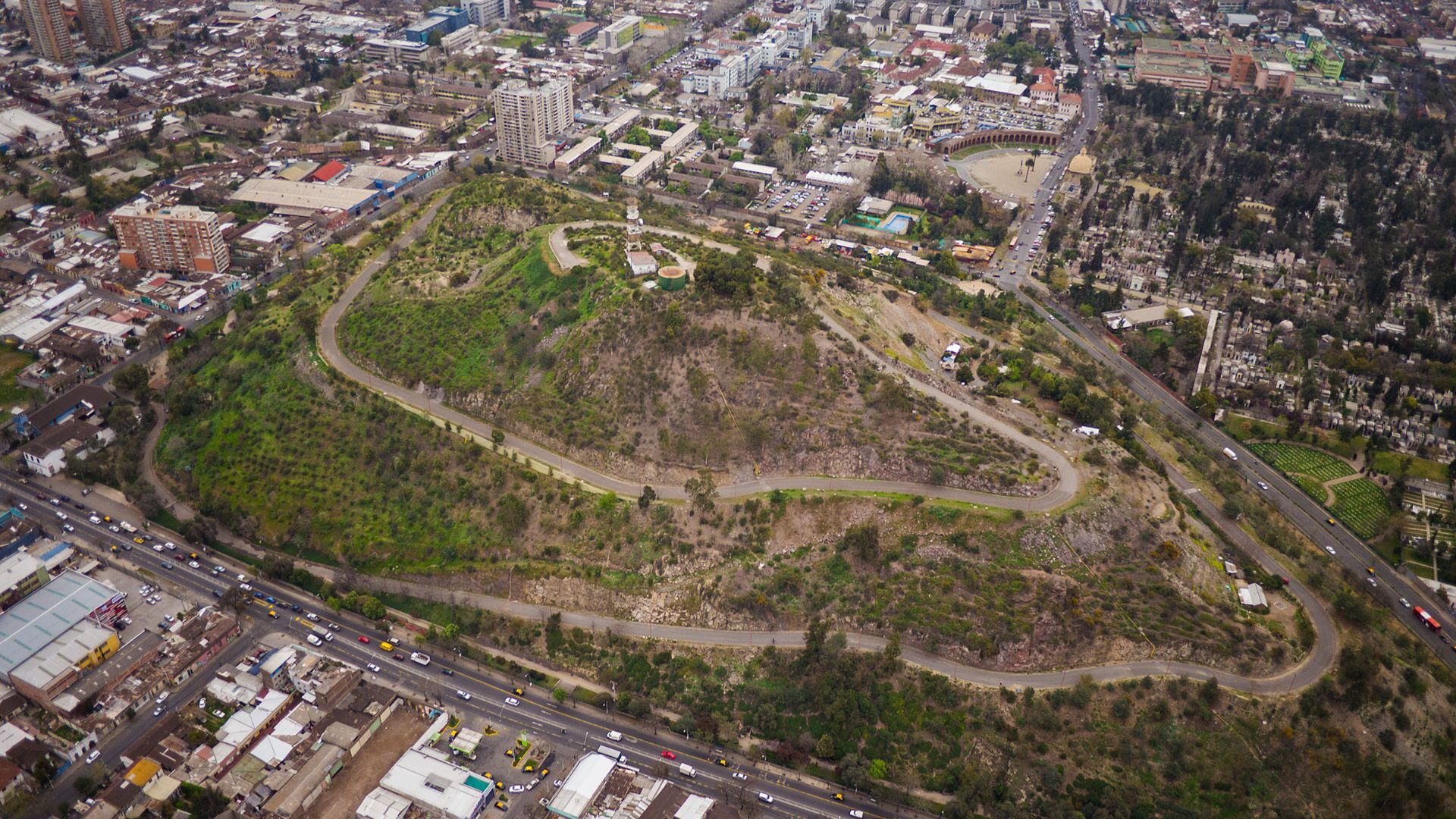 Gobierno de Chile on Wikimedia
Gobierno de Chile on Wikimedia
13. Akahoya Eruption
Year: 4300 BC
VEI: 7
The Akahoya event is one of the biggest volcanic eruptions of the past 12,000 years. It left a 12-mile underwater caldera near Japan's Osumi Islands. Far worse, it practically wiped out early human civilization in the area. It has also has a profound effect on regional agriculture, even into modern times. The Akahoya eruption may have unleashed as much as 120 cubic miles of rock and ash.
12. Mount Mazama
Year: 5700 BC
VEI: 7
Have you ever wondered where Crater Lake came from? Not from a meteor strike, but from one of the biggest volcanic eruptions ever. About 7,700 years ago, there was no lake here. Instead, there was a volcano called Mount Mazama. However, it exploded with such force that it collapsed into a caldera. That eruption sent ash into the stratosphere, blanketing 8 states and 3 Canadian provinces. Mazama ash is so pervasive in North American sediment layers that scientists can even use it to date things.
 Semionk (talk · contribs) on Wikimedia
Semionk (talk · contribs) on Wikimedia
11. Aira Caldera
Year: 22,000 years ago
VEI: 7
The explosion that created the Aira Caldera dwarfs everything else on this list so far. It may have ejected 400 square kilometers of material. It left a smaller but more active volcano in a 17 x 23 km caldera.
10. Phlegraean Fields
Year: 37,000 years ago
VEI: 7
Vesuvius isn't the only volcano near Naples. In fact, it's not nearly the scariest. Off to the west, hidden underground, lies the supervolcano known as the Phlegraean Fields. When it exploded 39,000 years ago, it vomited 500 square km of junk into the atmosphere. Ironically, this disaster may be part of the reason we're here. It's theorized the Phlegraean Fields eruption may have led to the extinction of the Neanderthals. That allowed us to take over. So... thanks?
9. Valles Caldera
Year: 1.2 million years ago
VEI: 7
Not much is known of the eruption that formed the Valles Caldera in New Mexico. But it must have been one of the biggest volcanic eruptions ever. The caldera it left behind is 13.7 miles wide. Can you imagine the energy it takes to make a hole that big?
8. Long Valley
Year: 760,000 years ago
VEI: 7
Chile and Indonesia may have dominated early on, but the US has its share of volcanoes. They're not all the kind you can see, though. Long Valley is a great example. This caldera was forged in fire 760,000 years ago. The eruption that formed it destroyed thousands of square miles. It also rained ash across most of the western US. The total material ejected was about 580 square km.
7. La Garita
Year: 26.3 million years ago
VEI: 8
This Colorado caldera was formed by one of the biggest volcanic eruptions in the history of our planet. Even though it's the smallest of he VEI 8 eruptions on the list, it's hard to explain its size. Basically, it would have destroyed all of Colorado. The explosion was about 5,000 times more powerful than the most powerful hydrogen bomb. It released 1,200 cubic miles worth of material, reshaping a huge swath of the U.S. The result was the most high-energy event on earth since the asteroid impact that doomed the dinosaurs.
6. Yellowstone
Year: 640,000 years ago
VEI: 8
This was the eruption that created the Yellowstone caldera. If you didn't know, Yellowstone is actually a supervolcano. Not a dormant one, but an active one. Even now, magma is collecting in invisible chambers below the surface. About 640,000 years ago, this lava pimple exploded. It radically changed the geography of the surrounding area, and rained ash on most of the continental United States.
5. Cerro Galán
Year: 2.2 million years ago
VEI: 8
The Cerro Galán caldera in Argentina is 35 x 20 km across. The size is indicative of the eruption that created it. It would have been an awesome display of power, churning more than 1,000 cubic km of material into the sky. The evidence is written all over the geography of the area, up to 50 miles away from the caldera.
4. Oruanui eruption
Year: 26,500 years ago
VEI: 8
Great natural beauty usually comes from great destruction. No country knows this more than New Zealand. The Oruanui eruption is the most recent VEI 8 event in our history. It vomited at least 280 cubic miles of material into the sky. It left ash deposits 7 inches deep up to 620 miles away. All that's left behind is the beautiful Lake Taupo.
3. Whakamaru
Year: 340,000 years ago
VEI: 8
As big as Oruanui was, it's not the biggest volcanic eruption in the history of New Zealand. That honor goes to the Whakamaru eruption. It was almost twice the size, ejecting 2,000 cubic km of material.
 Ulrich Lange, Bochum, Germany on Wikimedia
Ulrich Lange, Bochum, Germany on Wikimedia
2. Pacana Caldera
Year: 4 million years ago
VEI: 8
The explosion that created Chile's Pacana Caldera released 2,451–3,500 cubic kilometers (588–840 cu mi) of rock and ash. It was truly one of the biggest volcanic eruptions known. If an explosion like this happened today, it would be the end of human civilization as we know it.
1. Toba
Year: 76,000 years ago
VEI: 8
Indonesia takes home the big prize. Toba Lake in present-day Sumatra is actually a caldera caused by the biggest volcanic eruption of all time. It's estimated Toba ejected between 2000 and 3000 cubic km of material. It's hard to underestimate the effect this would have had on the planet. Average global temperatures may have dropped by 3-5 °C for years following Toba's eruption. Some scientists theorize that it helped lead to a 1,000-year mini ice age, decimating life on the planet. Other scientists theorize that the Toba disaster was the cause of a genetic bottleneck in early humans. It may have reduced our population from some millions to fewer than 10,000 individuals.


